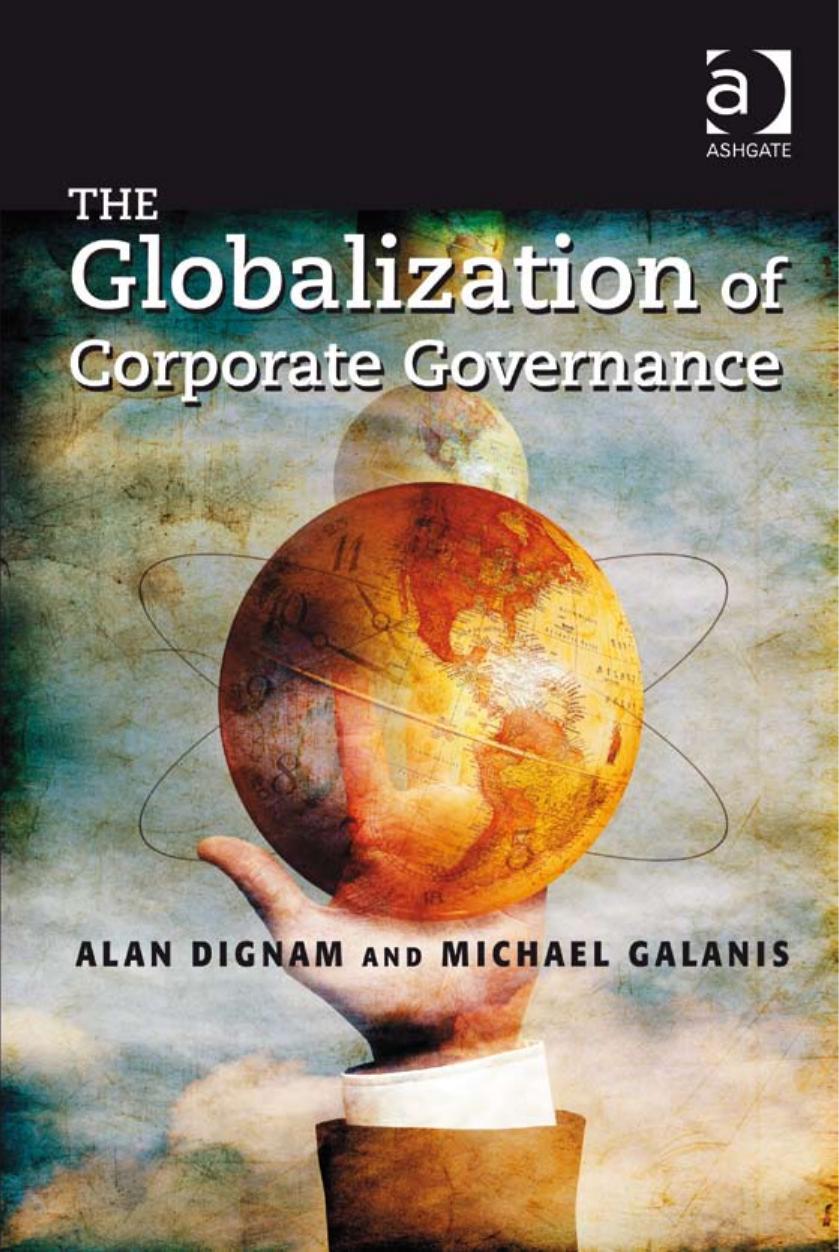The Globalization of Corporate Governance by Alan Dignam Michael Galanis

Author:Alan Dignam, Michael Galanis
Language: eng
Format: epub, pdf
Publisher: Ashgate
Published: 2009-01-03T05:00:00+00:00
Conclusion
As we described above the UK and the US have a shared history of trade and investment because of their former colonial relationship. However, despite this shared history, on the eve of war in 1914 Britain and the US looked very different in terms of their corporate governance systems. Britain still had traditional owner managed firms and operated in an open free trade environment in which the state and labour did not operate to constrain management discretion significantly. The US was dominated by managerial companies trading globally but from behind a protective tariff system. Labour was not a significant constraining influence on management and the dispersal of shareholders in these companies meant that managers were free from any sort of insider control. However, there was a higher level of state control of their activities than in Britain, as highly unusually the growth of big business preceded the growth of government in the US and so suspicion of US companies resulted in active state involvement in protecting the consumer against collusive behaviour by companies. These collusive issues were not a significant concern in the UK and would continue to mark a key difference between the two corporate governance systems for most of the twentieth century.
During the interwar years the corporate governance landscape changed significantly as the war disrupted trade and economic nationalism rose. Britain abandoned free trade and introduced a wide range of tariff barriers as world trade dwindled in the Great Depression. In both countries the role of government in the economy increased, as did labour bargaining power. Although in the 1920s banks had exerted significant influence over companies in the UK and the US, by the late 1930s banks were a diminishing influence. The major differences between the two countries remained that in Britain, family control still persisted, while in the US shareholding was dispersed and in Britain collusion was not only tolerated but coordinated by central government. As a result by 1939 banks had come and gone as influences on management, families persisted as an influence on British management, competitive pressures on management discretion were greater in the US and in both countries the state and organized labour had also come to exert pressure on management discretion.
The period between the end of WWII up until the mid 1960s was a period of stability in the face of the challenge of the Cold War. Macroeconomic stability was achieved through the Bretton Woods agreement whereby the rebuilding process necessitated by the WWII could be completed. The continued growth of the state’s involvement in the control of the economy is a major feature of the period as government, business and organized labour coordinated their activities to ensure stability and growth and in Britain nationalization of industries occurred. However, as the German and Japanese economies recovered after the war, they began, due to favourable GATT treatment and massive financial and technological transfers from the US, to make serious inroads into US and UK markets. The response of companies in the UK and
Download
The Globalization of Corporate Governance by Alan Dignam Michael Galanis.pdf
This site does not store any files on its server. We only index and link to content provided by other sites. Please contact the content providers to delete copyright contents if any and email us, we'll remove relevant links or contents immediately.
International Integration of the Brazilian Economy by Elias C. Grivoyannis(57339)
The Art of Coaching by Elena Aguilar(50038)
Flexible Working by Dale Gemma;(22951)
How to Stop Living Paycheck to Paycheck by Avery Breyer(19216)
The Acquirer's Multiple: How the Billionaire Contrarians of Deep Value Beat the Market by Tobias Carlisle(11678)
The Radium Girls by Kate Moore(10910)
Thinking, Fast and Slow by Kahneman Daniel(10594)
The Art of Thinking Clearly by Rolf Dobelli(8850)
Hit Refresh by Satya Nadella(8340)
The Compound Effect by Darren Hardy(7565)
Atomic Habits: Tiny Changes, Remarkable Results by James Clear(7221)
Turbulence by E. J. Noyes(7043)
Tools of Titans by Timothy Ferriss(6952)
How to Be a Bawse: A Guide to Conquering Life by Lilly Singh(6695)
Change Your Questions, Change Your Life by Marilee Adams(6646)
Nudge - Improving Decisions about Health, Wealth, and Happiness by Thaler Sunstein(6636)
Win Bigly by Scott Adams(6319)
The Black Swan by Nassim Nicholas Taleb(6194)
A Court of Wings and Ruin by Sarah J. Maas(6092)
